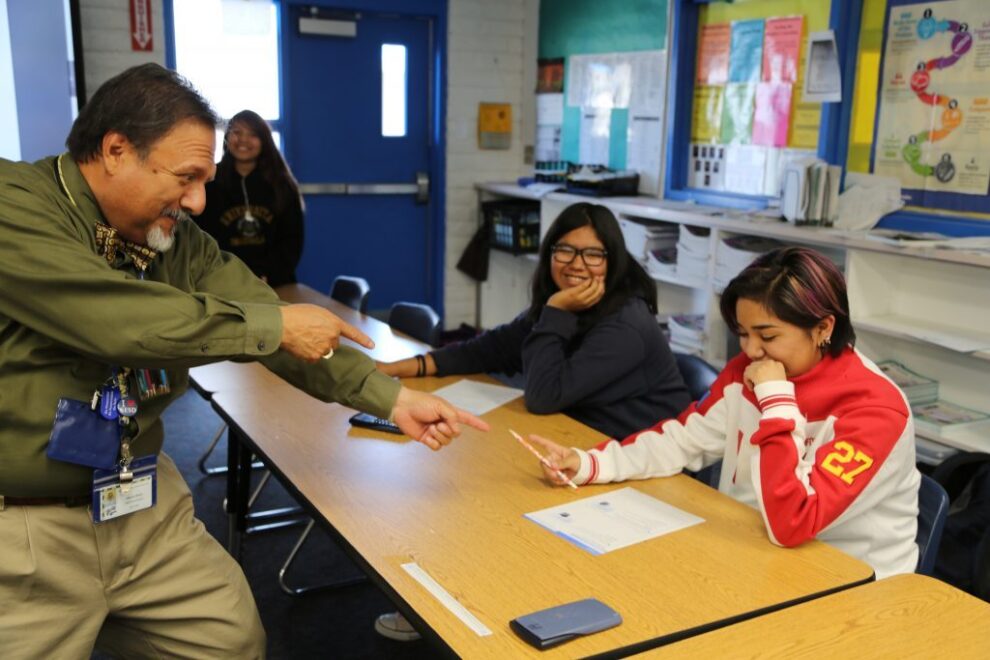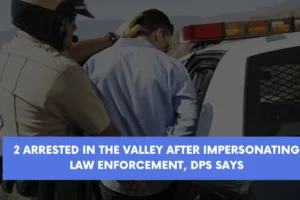Arizona public school leaders say Impact Aid is a key funding source for schools on or near federal, military or tribal lands that are not subject to the state or local property taxes that traditionally provide significant funds for K-12 public schools’ budgets.
The federal government pays the funding to 76 Arizona public school districts and charter schools or about 34 percent that serve federally connected students to help reduce lost property tax revenues and provide much needed education funding.
“I’m really interested in Impact Aid, because most of our funding comes from that. It’s important to learn about what’s required and how it can be used so that our students will benefit,” said Leona Hinton Smith, governing board president for McNary Elementary School District in McNary, Ariz., a small community on the White Mountain Apache Tribe of the Fort Apache Reservation near Pinetop in Apache County.
Video by Mary Irish/AZEdNews: Impact Aid
Where Arizona ranks
Arizona public schools receive the second largest amount of Impact Aid in the nation, only Alaska receives more. The federal government provides 76 Arizona public district and charter schools with $214.8 billion in for the 34,131 students who live on Native American or federal lands, whose parents serve in the military or work on federal lands, or who live in low-rent housing.
“For a lot of schools on Indian lands that receive Impact Aid, about 50 percent of their budget comes from state funding and about 50 percent comes from Impact Aid,” said Larry Wallen, executive director of the Arizona State Impact Aid Association at the Summer Leadership Institute sponsored by Arizona School Boards Association from June 6-8 in Flagstaff.
For schools that don’t receive this federal funding, about 50 percent of their budget comes from state funding, 25 percent from taxes on local businesses and 25 percent from taxes on local homes.
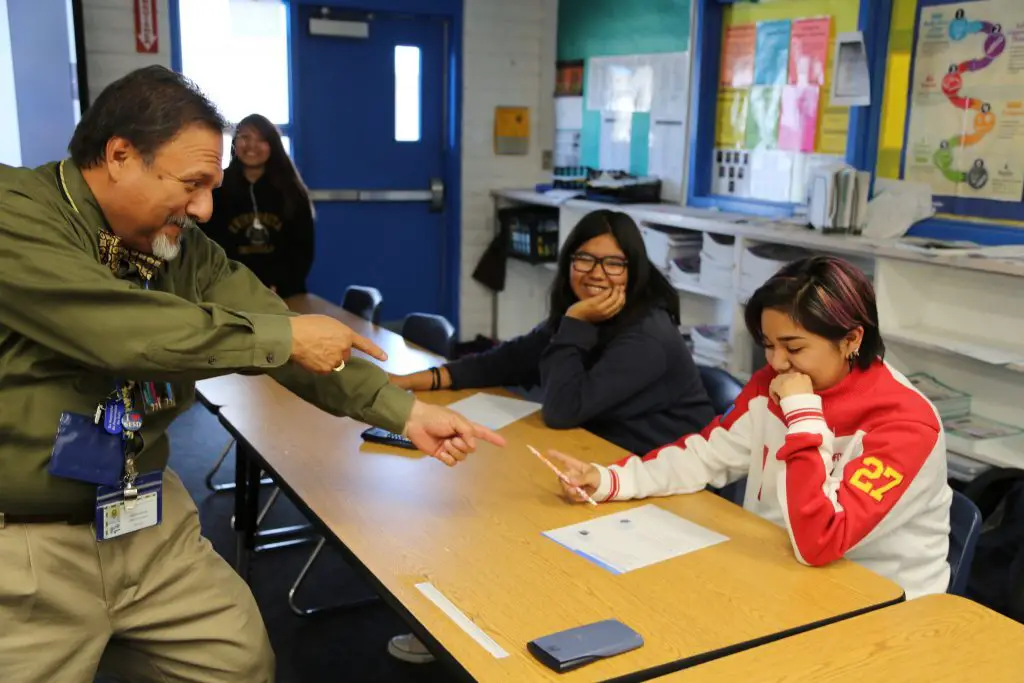 A teacher interacts with students during class in a Sacaton Elementary School district. Photo by Brooke Razo/ASBA
A teacher interacts with students during class in a Sacaton Elementary School district. Photo by Brooke Razo/ASBA
Snapshot of AZ schools that receive it
Most Arizona schools receive Impact Aid based on their federally connected students, and the state ranks 6th in the nation for that.
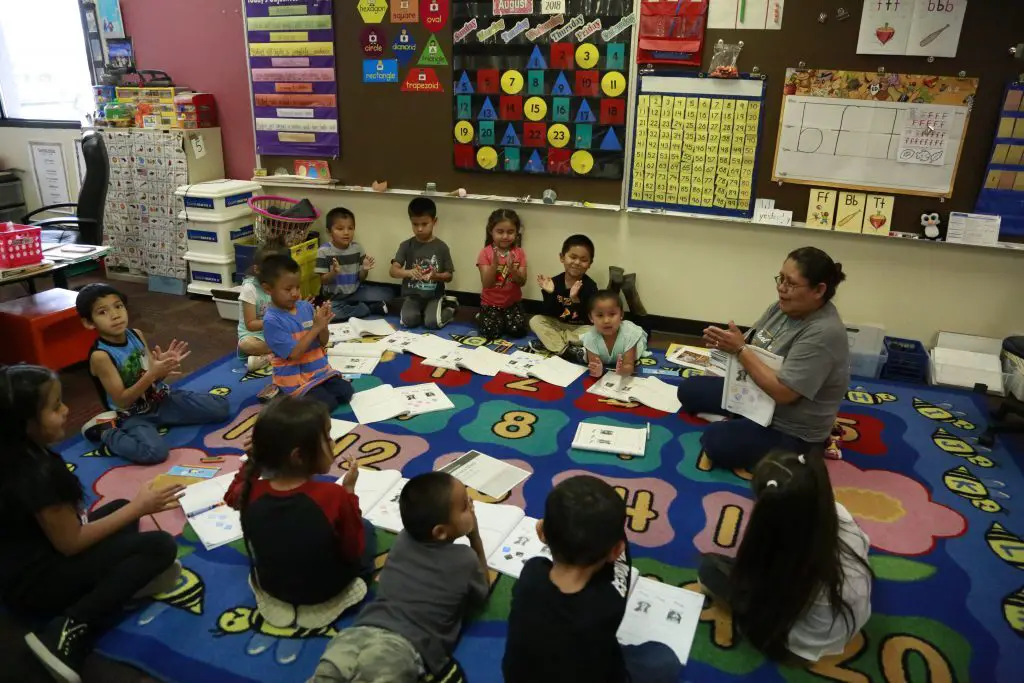 Students take part in an activity with their teacher during classes at a Kayenta Unified School District campus. Photo by Brooke Razo/AZEdNews
Students take part in an activity with their teacher during classes at a Kayenta Unified School District campus. Photo by Brooke Razo/AZEdNews
Congress has not fully funded Impact Aid since 1969. When it’s not fully funded then school districts receive funding based on their Learning Opportunity Threshold (LOT) created in 1994 that provides funding based on need, Wallen said.
In Arizona, about 36 percent of the schools that receive Impact Aid have a LOT of up to 25 percent, 16 percent have a LOT of up to 50 percent, 8 percent have a LOT of up to 75 percent, and 40 percent have a LOT of up to 100 percent.
About 1/3 of all Arizona public schools that receive Impact Aid have a LOT of 100 percent and receive all their funding no matter what. McNary and Sacaton elementary school districts are among those.
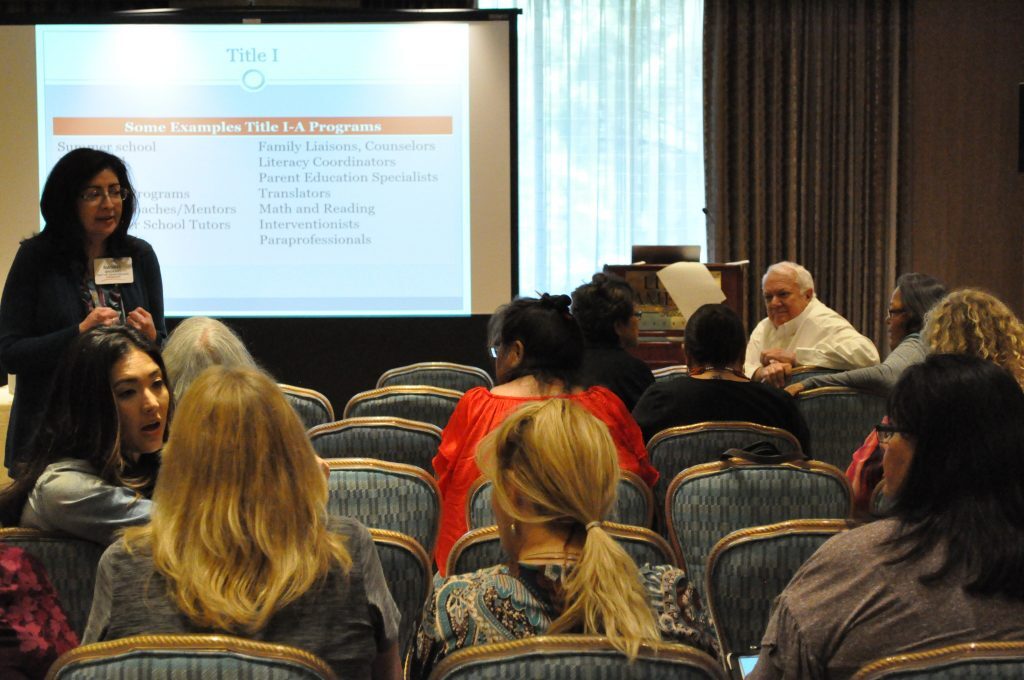 Nadine Groenig, far left, and Larry Wallen, far right, talk with participants about federal funding at the Summer Leadership Conference June 6, 2019 in Flagstaff. Photo by Lisa Irish/AZEdNews
Nadine Groenig, far left, and Larry Wallen, far right, talk with participants about federal funding at the Summer Leadership Conference June 6, 2019 in Flagstaff. Photo by Lisa Irish/AZEdNews
Dr. Cherryl Paul, superintendent of Sacaton Elementary School District, which serves more than 640 students in the Gila River Indian Community in Pinal County, said she is thinking about creating a video to show families what forms they need to note that they are Native American on when they are registering students.
“I believe that we are not having an accurate count of all of our students simply because the forms and sometimes the process gets in the way. I’m thinking about how we can evolve to be better communicators for our students, families and our community,” Dr. Paul said.
 Participants discuss how federal funding affects their school districts at the Summer Leadership Institute in Flagstaff on June 6, 2019. Photo by Lisa Irish/AZEdNews
Participants discuss how federal funding affects their school districts at the Summer Leadership Institute in Flagstaff on June 6, 2019. Photo by Lisa Irish/AZEdNews








